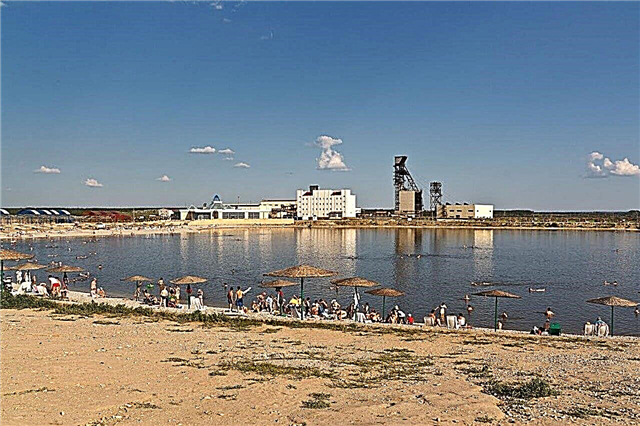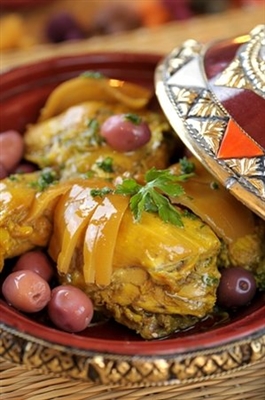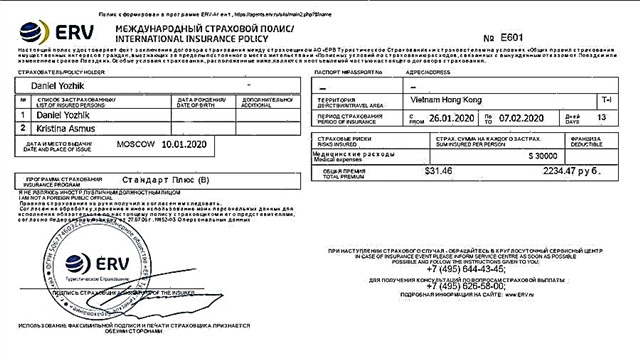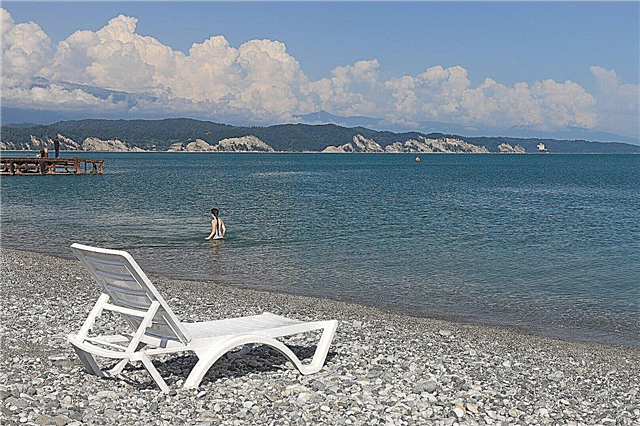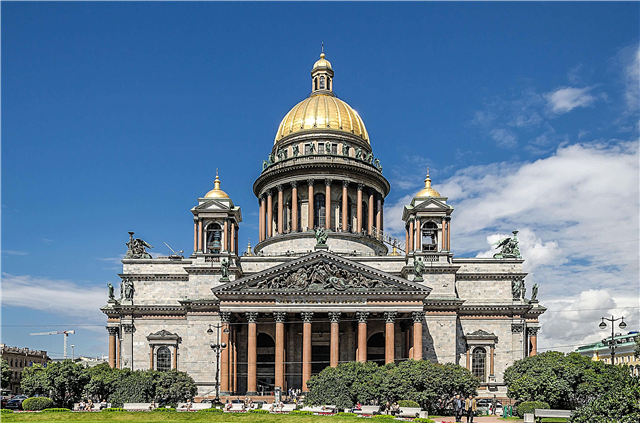The temples of St. Petersburg can rightfully be called witnesses of the history of the city. Many of them were founded by the first Russian emperors and are unique architectural monuments. Kazan and St. Isaac's cathedrals are called “the face of St. Petersburg”. In the city there are temples of other religious movements - for example, the Buddhist datsan, or Lutheran churches.
After the 1917 revolution, many churches in St. Petersburg were closed, and the buildings were transferred to various institutions. Most often, the unique interiors of the temples were lost. In the 1990s-2000s, churches are being restored, and their decoration is being restored. To this day, the city's temples destroyed during the Soviet period are being restored. New churches are also opening - in June 2019, the consecration of the church of St. Xenia of Petersburg.
Operating churches and cathedrals of St. Petersburg
List of the most popular temples in the city.
Kazan Cathedral
Built in 1811 by architect A. Voronikhin on the site of the court church of the Nativity of the Blessed Virgin Mary. After the war of 1812, the temple was revered as a storage place for the relics of the victory of the Russian army, and MI Kutuzov was buried there. In 1932, the temple was converted into the Museum of Religion and Atheism. Since 1991, divine services have resumed in the right side-altar of the cathedral. In 2000, it acquired the status of a cathedral.
Address: St. Petersburg, Kazanskaya square, 2
Site: kazansky-spb.ru

Saint Isaac's Cathedral
The cathedral was built on the site of St. Isaac's Church, where Peter I and Catherine I were married. In 1818, the construction of the temple began by Auguste Montferrand. During the construction of the columns, granite monoliths were used. Famous Russian artists - F. Bruni, K. Bryullov and others - took part in the painting. After the revolution, an anti-religious museum was opened here. In 1990, church services were resumed in the side-altars of the temple.
Address: St. Petersburg, Isaakievskaya square, 4
Site: cathedral.ru

Savior on Spilled Blood
The name indicates that the temple was built on the site of the death of Alexander II on the banks of the Griboyedov Canal. The temple was founded in 1883, but the consecration took place only in 1907, as the finishing work was lengthy. After the revolution, the temple was closed. In 1997 it opened as a museum. And in 2000, services began again in the cathedral.
Address: St. Petersburg, Griboyedov canal embankment, 2 A
Site: spas.spb.ru

Smolny Cathedral
Construction began in 1748, designed and directed by the Italian architect Bartolomeo Rastrelli. The delay in construction was caused by the Seven Years War. Only in 1820, by decree of Nicholas I, the final completion of the construction began, and in 1835 the cathedral was consecrated. After the revolution, the cathedral was used as a storehouse for decorations. Since 2009, divine services have been held there.
Address: St. Petersburg, Rastrelli square, 1
Site: smolnyspb.ru

Peter and Paul Cathedral
The stone Peter and Paul Cathedral was built in 1712-1733. on the site of the wooden Peter and Paul Church. The construction was carried out according to the project of the architect Domenico Trezzini. By order of Peter I, it began with a bell tower 112 meters high. After the 1917 revolution, the temple was turned into a museum. Since 2000, divine services have been held in the cathedral again. The temple is known as the burial vault of the Russian emperors.
Address: St. Petersburg, Peter and Paul Fortress, 1

Nikolo-Epiphany Naval Cathedral
The temple was built in the period 1753-1762 as a "naval regimental church". It has two churches - the upper Epiphany, and on the lower tier - the Nikolskaya Church. The cathedral became a place of solemn divine services in honor of the victories of the Russian army. In 1908, the Tsushima obelisk was erected in front of him. After the revolution, the temple was not closed. In 1966, a funeral service for the poetess Anna Akhmatova took place here.
Address: St. Petersburg, Nikolskaya square, 1, bldg. 3
Website: www.nikolskiysobor.ru

Transfiguration Cathedral
The official name of the cathedral is the Cathedral of the Transfiguration of the Lord of the whole guard. The name comes from the fact that it was built on the site of the "congress hut" - the headquarters of the Life Guards Preobrazhensky Regiment. Construction began by decree of Elizaveta Petrovna, as a gratitude to the Life Guards. The first consecration took place in 1753. After the revolution, the temple functioned. During the war it was used as a bomb shelter. In the years 1946-1948, it was restored.
Address: St. Petersburg, Preobrazhenskaya square, 1
Site: spaso-preobr-sobor.ru

Trinity Izmailovsky Cathedral
The full name is the Cathedral of the Holy Life-Giving Trinity of the Life-Guards Izmailovsky Regiment. Built on the site of the regimental church of the Izmailovsky regiment of guards. In 1754 a wooden church was opened, but after the flood of 1824 it was decided to lay a new stone cathedral. The construction was completed in 1835. The temple is known as the place of the wedding of F.M.Dostoevsky with A. Snitkina. After the revolution, the cathedral was supposed to be demolished, or rebuilt into a city crematorium. In 1990 it was returned to the Russian Orthodox Church.
Address: St. Petersburg, Izmailovsky prospect, 7 A
Website: www.izmsobor.ru

St. Vladimir's Cathedral
The cathedral was built in 1769. The author of the project is the architect P. Trezzini (according to other sources - Christian Knobel). In 1828, the cathedral became the place of the funeral service for Arina Rodionovna, A.S. Pushkin's nanny. Fyodor Dostoevsky was a parishioner of the temple, and memorial services for the writer are held here every year. During the Soviet period, the building housed the Lenmashuchet factory. The temple was consecrated again in 1990, and in 2000 it received the status of a cathedral.
Address: St. Petersburg, Vladimirsky prospect, 20
Site: vladimirsobor.spb.ru

Feodorovsky Cathedral
The Cathedral of the Feodorovskaya Icon of the Mother of God was built in honor of the 300th anniversary of the Romanov dynasty in 1913, and stylized as temples of the early 17th century - the beginning of the accession of the Romanovs. In January 1914, the consecration of the main chapel of the church took place, which was attended by Nicholas II. In 1932, the temple was turned into a dairy building. The cathedral was transferred to the Russian Orthodox Church in 2005.
Address: St. Petersburg, st. Mirgorodskaya, 1 B
Site: feosobor.ru

St. Andrew's Cathedral
The Cathedral of the Holy Apostle Andrew the First-Called is located on Vasilievsky Island. In 1731, a wooden church was built according to the project of G. Trezzini, but the building burned down due to lightning. Then work began on the construction of a stone church, which was completed in 1780. Like other churches in St. Petersburg, St. Andrew's Cathedral was closed in 1938, and returned to the Russian Orthodox Church in 1992.
Address: St. Petersburg, 6th line of Vasilievsky Island, 11
Website: andrew-sobor.ru

Holy Cross Cossack Cathedral
The temple is located on Ligovsky Prospekt, in the place where coachmen with their families lived in the old days. Therefore, until 1991, the temple bore the name of the Holy Cross Yamskaya Church. There used to be a wooden church of St. John the Baptist on this site, but in 1749 it was rebuilt into a stone cathedral. In 1848-1852, the temple was redesigned by the architect E. Dimmert. In 1938 the church was turned into a factory. In 1991 the temple was transferred to the Cossack parish.
Address: St. Petersburg, Ligovsky prospect, 128
Site: krest-sobor.ru

Church of the Nativity of St. John the Baptist (Chesme Church)
The church was built in the "pseudo-Gothic" style and is an architectural monument of federal significance. The temple was founded in honor of the victory of the Russian army over the Turkish fleet in the Chesme Bay (1770). In 1924, the bells were removed from the church and images of pincers, a hammer and an anvil were placed on the dome. Since 1930, there have been carpentry workshops, and since 1977 - the Chesme Victory Museum. Divine services have been held in the church again since 1991.
Address: Lensoveta, 12
Site: chesma.spb.ru

Prince Vladimir Cathedral
This is one of the oldest churches in St. Petersburg, built in 1789 by the architect A. Rinaldi and I. Starov. The building style is classified as transitional from baroque to classicism. During the Soviet period, the temple was not closed, and since 1940 the Kazan Icon of the Mother of God was located here, which was previously in the Kazan Cathedral.
Address: Blokhin, 26
Site: vladimirskysobor.ru

Assumption Church
The church is located on Vasilievsky Island, on the Lieutenant Schmidt embankment. Previously, the Pskov diocesan courtyard was located here.In 1894, the laying of a new church for the courtyard took place, and in 1895 the construction was completed. After the revolution, the church was transferred to the port warehouse. In 1961, the first artificial skating rink in the USSR was opened here. In 1991, the temple was transferred to Optina Hermitage.
Address: St. Petersburg, Lieutenant Schmidt embankment, 27

Annunciation Church
This is the tallest church on Vasilievsky Island. The bell tower is 42 meters high. The church was built in 1750-1756 by an unknown architect, presumably G. Trezzini. She served as the parish church of the Academy of Sciences. Many famous personalities are buried in the churchyard near the church, including associates of Peter I and scientists. The relics of the temple disappeared after the October Revolution. In 1992, the temple was returned to the church.
Address: St. Petersburg, Vasilievsky Island, 7th Line, 68
Site: hramblag.spb.ru

Church of Saints and Righteous Simeon and Anna
The church is located on Mokhovaya Street in St. Petersburg. It was built by order of the Empress Anna Ioannovna, in the period 1730-1734. Until 1802, the temple was a court church. In 1938, the church was closed and plundered, and a warehouse was set up in the building. Later, in the 80s, a meteorological museum was opened there. In 1995 the church was consecrated again.
Address: Mokhovaya, 48

Sampson Cathedral
Initially, the St. Sampson Cathedral was a wooden church, which was consecrated in honor of St. Sampson the Stranger (the day of his memory fell on the day of the Battle of Poltava). A stone cathedral was built in 1740. In 1763, a bell weighing about 400 pounds was cast for him. During the Soviet period, there were warehouses in the temple. Only in 2010 did daily church services begin again.
Address: St. Petersburg, Bolshoi Sampsonievsky prospect, 41
Site: sampsony.ru

Isidorovskaya church
The Church of the Martyr Isidor Yuryevsky and Nicholas the Wonderworker is located at the intersection of Rimsky-Korsakov and Lermontov Avenues. It was built in 1903-1908 for the Estonian Orthodox community. In 1935, an art factory was located in the building. In 1994, the temple was returned to the Russian Orthodox Church.
Address: St. Petersburg, Rimsky-Korsakov Avenue, 24
Site: vk.com/club1218202

Church of Xenia of Petersburg on the Petrograd side
This temple was built quite recently - in 2010-2019. The consecration took place on June 6, 2019. Xenia of Petersburg is one of the most revered saints in the city. It was on the Petrograd side, on the present Lakhtinskaya street, that she lived, and many of the miracles described in the life of St. Xenias happen right here. Therefore, the place for the temple was not chosen by chance.
Address: Lakhtinskaya, 17
Website: www.kseniya-hram-spb.ru

Temple of the Epiphany on Gutuevsky Island
The church was built in 1899 in honor of the "miraculous rescue of Tsarevich Nicholas" after an attempt on his life in Japan. The iconostasis that separated the altar is a unique work of art made of ivory-like faience. In 1935, the temple was closed, the interior was removed and gradually lost. The room was given over to a vegetable warehouse, then a soap factory. In 1991 the temple was returned to the church.
Address: Dvinskaya, 2
Website: www.gutui.ru

Church of St. Catherine at Tuchkov Bridge
Wooden church of St. Catherine was in this place back in the 1760s. But in 1809 it completely burned down, and in 1811-1823 a stone church was built. After the revolution, the building was transferred to the Hydrological Institute. After the war, the building was turned into a four-story building. He was taken by the All-Union Geological Prospecting Institute. In 1996, part of the building was returned to the believers. Restoration work is in progress.
Address: St. Petersburg, Vasilievsky Island, Kadetskaya Line, 27 A
Website: cerkovekaterina.ru

Church of St. John of Kronstadt
The church was founded in 1998, but the idea of building it appeared in the early 90s. Initially, it was planned to restore the St. Andrew's Cathedral, but due to lack of funding, the architects settled on the project of a small church. The temple was consecrated in 2004. There is a library at the church, it is planned to build a cathedral church.
Address: St. Petersburg, Kronstadt square, 2
Website: www.hramioann.ru

Church of the Resurrection of Christ at Varshavsky railway station
The temple is located on the embankment of the Obvodny Canal. A temporary wooden church was erected here in 1894 in honor of the wedding of Nicholas II. In 1905, the construction was completed, a year later a thousand-pound bell was raised on the bell tower. During the Soviet period, the building housed a tram fleet administration. In the summer of 1989, the temple was returned to the believers. The temple is known as the place of the funeral service for Lev Gumilyov, the scientist, the son of A. Akhmatova and N. Gumilyov.
Address: St. Petersburg, Obvodny Canal embankment, 116
Site: hram-varshavka.ru

Temple of the Holy Prophet Elijah
The full name of the temple is the church in the name of the Holy Prophet Elijah, the Holy Blessed Prince Alexander Nevsky and the Holy Martyr Paraskeva on Porokhovy. Previously, there were Okhta gunpowder factories in this place. The stone temple was built in 1785, and was completed several times. During the Soviet period, its building was transferred to the Ministry of Defense. In 1989, the building was returned to the church.
Address: St. Petersburg, Revolution Highway, 75
Website: ilya-prorok.org

Church of St. Peter Metropolitan of Moscow
The temple was built in 1911-1912 for the courtyard of the female Holy Trinity Monastery according to the project of A. Applaksin. The whole complex of buildings of the courtyard, including the temple, is made in the pseudo-Russian style. The church was closed in 1930, and two years later all the buildings of the courtyard were transferred to the Gidravlik plant. The interior decoration was destroyed, the domes and kokoshniks were removed. In 1994, the temple was returned to the diocese. Work is underway to restore it.
Address: Romenskaya, 12

Church of Saints Peter and Paul
The building was founded in 1728, on the territory donated by Peter I to the Lutheran community. In 1833, the creation of a new church began. On the day of the Reformation, October 31, 1838, the new building was consecrated. The altar was decorated with paintings by Karl Bryullov. At the bottom of the altar was a painting by Hans Holbein the Younger. In 1897, figures of St. Peter and Paul - copies of sculptures by A. Thorvaldsen. During the Soviet period, the church was converted into warehouses, then a swimming pool. In 1994, the temple was returned to the Lutheran community.
Address: St. Petersburg, Nevsky prospect, 22-24 B
Website: petrikirche.ru

St. Petersburg Buddhist Temple
The temple is located on Primorsky Avenue. It was built in 1915 according to a project developed by students of the Institute of Civil Engineers. In Tibetan, the name of the temple sounds like "Datsan Gunzechoinei" - "the abode of the holy Lord All-Compassionate." In 1937, the people who lived at the temple were arrested and the datsan was closed. Only in 1990 the temple was handed over to believers.
Address: St. Petersburg, Primorsky prospect, 91
Site: dazanspb.ru

Armenian Church of St. Catherine
The temple was built in 1772 at the request of the Armenian Orthodox community of St. Petersburg. In 1887, the artist I. Aivazovsky donated the painting "Christ on the Tiberias Lake" to the community. After the revolution, the building was used as an air defense headquarters, and after the war - decoration workshops. In 1993, the church was again transferred to the community.
Address: St. Petersburg, Nevsky prospect, 40-42 B
Website: armenian-church.org

Finnish Church of St. Mary
This is a Lutheran temple of the Finnish community, built in 1805. It is located on Bolshaya Konyushennaya Street. In 1938, the building was first transferred to the Hermitage, and then rebuilt into a hostel. Since 1970, it has housed the "House of Nature". The church was returned to the community only in 1994.
Address: Bolshaya Konyushennaya, 8 A
Website: elci.ru

Lutheran Church of St. Catherine
The church was built in 1768-1771 on the site of a wooden church of the Lutheran community. In 1852, an organ made by G. Metzel, brought from Resenburg, was installed in the church. The altar contained copies of paintings by Rubens "The Last Supper" and Vanloo "Resurrection". During the Soviet period, the building was transferred to the miners' club, then to the Hydroproject Institute. Later, the Melodiya recording studio worked there. In 1996, the temple was officially transferred to the Lutheran community.
Address: St. Petersburg, 1st line of Vasilievsky Island, 20 B
Site: stkathe.ru

Temple of Our Lady of Lourdes
This is a Catholic church that was built in 1903-1909 for the French Catholic community. The building project belongs to the famous architect L.Benoit. During the Soviet period, the temple was not closed; restoration work was carried out twice. In 1990, the building was overhauled, including the interior decoration.
Address: St. Petersburg, Kovensky lane, 7
Website: www.kovensky.ru

Swedish Church of St. Catherine
After the separation of the Swedish and Finnish communities of St. Petersburg, the Finnish community remained at the Church of St. Mary. For the Swedish community, the church building was built in 1767. Among the famous parishioners of the temple were the jeweler Karl Faberge, the Lidval and Nobel families. In 1934 the church building was closed. In the 1980s, a children's sports school was located here. The building was fully transferred to the community only in 2005, but services have been held here since 1993.
Address: Malaya Konyushennaya, 1-3 B
Site: vk.com/svenskakyrka

Church of St. Stanislav
Catholic Church of St. Stanislav was built in 1825. He had an elementary school. After the revolution, the temple was turned into a warehouse, then a workshop for the production of gas masks. In 1961 the building was transferred to the Rot Front factory. In 1996, the temple was returned to the Catholic Church.
Address: Union of Pechatnikov, 22
Site: vk.com/club70716326

Ancient Orthodox Pomor Church
The temple was built in 1906-1908. A characteristic feature of the interior decoration is a strict interior, the absence of wall paintings. During the Soviet period, the property of the temple was transferred to the Russian Museum. The building was transferred to the Avtoarmatura plant. In 2005, the church was returned to the Neva Old Believer Pomor community.
Address: Kolomenskaya, 12 B


